Stepping Stone 9: “Your Role” / How Fitness Professionals Can Support Indigenous Communities
by Dr. Rosalin Miles
Introduction
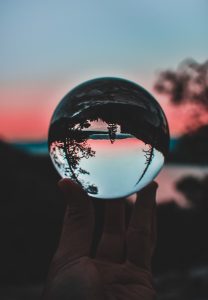
Promoting physical activity starts in the home with a family-centered approach to wholistic health and wellness. There are many traditional and mainstream partners who may empower Indigenous community members to be physically active and develop fitness. Having a partner in fitness or being active with land-based traditional activities are great ways to promote health and wellness. Sharing your goals related to being physically active with a fitness leader or a health professional is the first step in creating a partnership to support your vision for specific health and wellness outcomes. Within Indigenous communities, it is always an asset to work with people from the community. In our final Stepping Stone, we will uncover ways that you may become a leader in supporting Indigenous physical activity in your current and/or future fitness role.
Wholistic Learning Objectives
Stepping Stone 9 provides learners an opportunity to reflect on their role as a Fitness Leader within an Indigenous community.
Upon completion of Stepping Stone 9, learners should be able to:
*click through all 5 slides to read each of the wholistic learning objectives*
Warm-up Activity
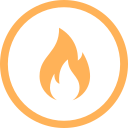
As fitness leaders, we understand that it is important to prepare for movement by warming-up.
This is a great opportunity to go for a walk, run or roll—or to plan your next walk, run, or roll.
-
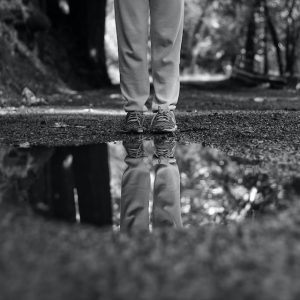
Photo by Nathaniel Chia on Unsplash Do you venture out open-endedly, or do you plan to complete a lap or a known closed loop (i.e., set time, or distance for fitness)?
- Do you set out to a destination to gather and harvest, or to complete errands such as picking up groceries, banking, etc.?
- Finally, do you go out with no plans except to be in the moment?
The Value of a Fitness Leader
It is valuable for fitness leaders and health professionals to review one’s health history and develop a weekly plan and monthly goals. The most important role of the fitness leader is to be there to provide sound, strength-based information that is connected to the Two-Eyed Seeing approach, which is a combination of Western ways of knowing and Indigenous ways of knowing (Martin, 2012). Western ways of knowing are grounded in conventional fitness leader training which may include accreditation. Accreditation may be standardized locally, regionally, or nationally. Indigenous ways of knowing include fitness activities that are based on culture and traditions that have land- or water-based connections to being physically active. Being active and developing diverse fitness goals may also have connections to being active with family. Developing fitness activities using a family-centered approach is inclusive of all ages, sexes and genders, and abilities. Therefore, to promote fitness, Indigenous people may need goals that include being active with family. Moreover, these goals should also ensure that fitness activities are inclusive and accessible to children and Elders. We have learned in previous Stepping Stones that when a family is active together they are more connected. It should be noted that defining families is indeed diverse; families may be a broad network of friends you call aunties, uncles, cousins, brothers or sisters, and people you choose. A family-centered approach involves being aware of your home and community networks who may be partners in sharing aspirations for health and wellness. As a fitness leader, it is important for you to recognize who you are working with, where you are working (in which community), and to build your fitness practice with these underlying necessities.
Activity 1
Read: Beginner’s Fitness Program – First Nations Health Authority
When developing a fitness program within an Indigenous community, it is important to look at resources that are accessible in the home, and/or are outdoors as many rural communities do not have fitness centers. Think of some examples of locations in your community that you could use to engage in fitness.
- Why is developing a safe fitness program, that may be done at home, important?
Activity 2
- How does this article come across as deficit-based?
Becoming a Fitness Leader
When reflecting on the role of fitness leader within an Indigenous community, the most important goal would be to have an Indigenous fitness leader from the community. This would ensure awareness of community background, history, culture and traditions. If this is not possible, one of the roles of a fitness leader from outside of the community should be to identify someone local who may be interested pursuing fitness leadership and create a succession plan for that person to grow into the role. Fitness leaders may be recruited from the community starting with high school students who show a keen interest. All fitness leaders should start with simple Standard First Aid and Cardiopulmonary Resuscitation (CPR) training (Standard First Aid CPR-C, AED training ideal) so that leaders are confident and know how to respond to emergencies in a community space.
Fitness leader training varies depending on province and region, and it is valuable to attend local fitness events to connect with other fitness leaders. There, you may have the opportunity to learn about fitness leader qualifications and target participants in your region. Fitness leaders may specialize in one-on-one fitness programming, group exercise, or other specialties such as training for people with chronic disease (e.g., arthritis, and osteoporosis).
There are other mainstream fitness specialties such as:
- Weight Training
- Personal Training
- Osteofit instructor, or Bonefit
- Group Fitness Leader, such as aerobics or cycling
- Aquafit Fitness Leader
- Yoga or Pilates Fitness Leader
- Senior Fitness Leader
However, when thinking of developing fitness programming for your community, cultural activities such as traditional dancing, bone, and stick games, ball games, training for hunting, and other land or water-based activities may have greater participant adherence. These activities are ones that the community has practiced for thousands of years.
Activity 3
Perform: Pow wow cardio fitness with James Jones (23:46)
- How did you feel doing pow wow versus running on a treadmill?
- Could you see the utility of incorporating this type of cardio fitness into an exercise program?
Activity 4
Perform: Métis Jigging (4:02)
- How did you feel jigging about connections to history while practicing fitness?
Wellness Break
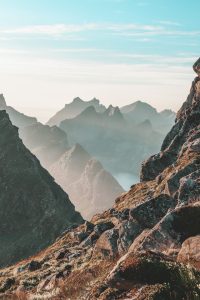
Fitness is tied to wholistic health and wellness components. When anyone begins an activity program, perhaps after being sedentary for some time, it is recommended to be mindful of low-intensity and low-impact exercises to start. From here, you can build on intensity.
How do you incorporate local cultural and traditional ways of knowing into fitness every day?
Next time you visit a place where you view a mountain or a large rock formation, think of the people that came before you (more than a few hundred years ago). This was their Stepping Stone or Touch Stone to the generations before them and the generations after.
A Deeper Journey
We encourage you to explore these additional resources for a deeper journey related to this Stepping Stone.
*click on the headings below to reveal more resources*
Stepping Stone 9 Summary
 When reviewing sources for promoting fitness within Indigenous communities it is important to focus on strength-based approaches. There have been many challenges due to colonization and changes in lifestyle for Indigenous people. However, it is always important to review your role as a fitness leader within a community, to ensure that it is empowering Indigenous community members to be physically active. Programs should always start with who is present in the community, and with what is available in the community. Creating partners in health, whether with Indigenous health professionals and/or family members, is a key and important priority.
When reviewing sources for promoting fitness within Indigenous communities it is important to focus on strength-based approaches. There have been many challenges due to colonization and changes in lifestyle for Indigenous people. However, it is always important to review your role as a fitness leader within a community, to ensure that it is empowering Indigenous community members to be physically active. Programs should always start with who is present in the community, and with what is available in the community. Creating partners in health, whether with Indigenous health professionals and/or family members, is a key and important priority.
Cool-down Activity
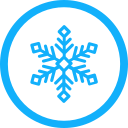 On your journey through Exercise and Physical Activity in Indigenous Health, you have navigated through nine (9) Stepping Stones; it has been quite a journey of resilience. Each Stepping Stone has been a touchstone opportunity to reflect on wholistic balance and navigating the diverse Indigenous cultures.
On your journey through Exercise and Physical Activity in Indigenous Health, you have navigated through nine (9) Stepping Stones; it has been quite a journey of resilience. Each Stepping Stone has been a touchstone opportunity to reflect on wholistic balance and navigating the diverse Indigenous cultures.
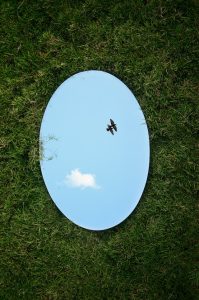
We ask you to reflect one more time, by taking a look at yourself.
As you reflect on the strengths of Indigenous ways of knowing be aware of your own connections to Turtle Island and the long history over thousands of years for Indigenous people.

